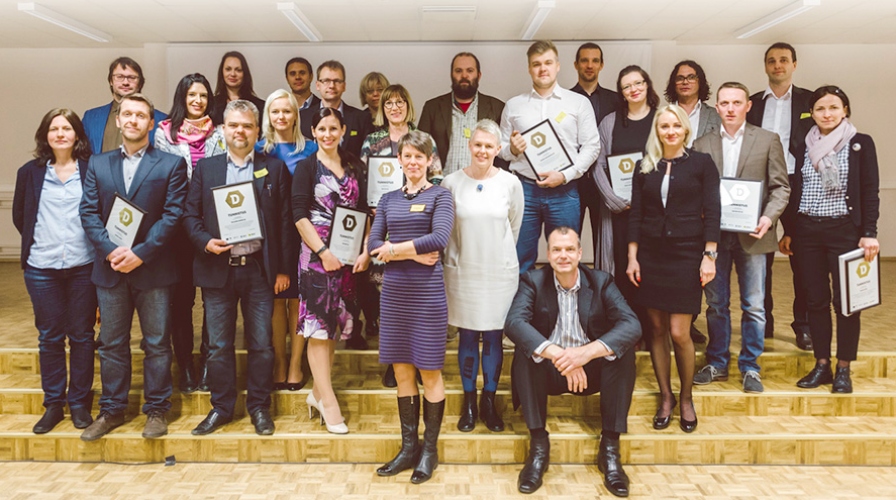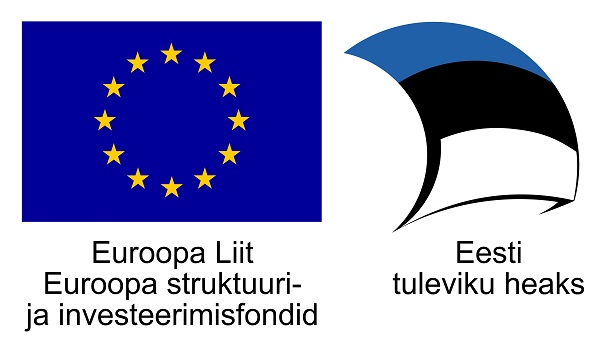How design helped: Design Bulldozer

Design Bulldozer
- Country: Estonia
- Funder: Ministry of Economic Affairs & Communications
- Investment: €400,000
- Time: 20 months
- Design support: Estonian Design Centre
Background
In January 2012 Estonia became the first country in Europe with a dedicated national design policy. The National Action Plan for Design was the culmination of more than a decade of advocacy and policy development which included the creation of the Estonian Design Centre in 2008.
The National Action Plan focused on increasing the use of design both in private and public sectors with an emphasis on design as a source of competitive advantage. This plan was supported by EU Structural Funds (2007 – 2013 budget), grants dedicated to reducing inequality amongst member states.
The first project to result from the plan, Design Bulldozer, was launched in May 2012 by the Estonian Design Centre with the Ministry of Economic Affairs & Communications and Enterprise Estonia.
Design Bulldozer is a design support programme for 10 businesses and 10 design managers, piloting strategic design intervention over 20 months.
In many Estonian enterprises the executive manager also acts as an export manager, a marketing manager and chief designer. Highly qualified specialists are needed for the enterprise to move to a higher position in the value chain.
How design helped
Design Bulldozer worked with 10 companies, from a law firm to a snowplow manufacturer to a software company – and paired them with 10 of the country’s very best designers to act as design managers.
Programme Supervisor Richard Eisermann explains how Design Bulldozer works
Each firm was led through a structured programme to help them understand how design could be incorporated into their innovation process.
This programme was organised into 5 stages:
Stage 1 – Let’s speak the same language
Terminology was established and the key ideas behind human-centred design, branding and strategy were introduced.
Stage 2 – Design Audit
The company’s specific needs were identified and an action plan for the rest of the programme was devised.
Stage 3 – Design Project
A brief was defined and design partners were chosen for its implementation.
Stage 4 – Development
The design project was implemented.
Stage 5 – Project closure
Outcomes and learnings from the project were summarised.
Design Bulldozer aimed to help companies see design as an effective means to improve competitiveness and deliver rapid results.
Design methods were used to help businesses base new product development on the needs of users – rather than just received wisdom or the available technologies. This meant identifying problems in existing solutions, evaluating the needs of customers and then visualising the results.
Previously a company like Meiren had set themselves the simple goal of producing the best snowplows. Now they approach it from the customer’s perspective: what makes the best snowplow from the point of view of the operator? And what does a local municipality want when they buy snowplows?
The outcome
-
20 months design support
-
10 companies supported through the innovation programme
-
10 design managers working with businesses
The programme has helped companies offer compelling new services and products that are specifically built around user needs. The aim of this is to increase companies’ economic performance and competitiveness both in domestic and foreign markets.
I expected Design Bulldozer to be different to the design programmes I’d worked on before, it’s a different part of Europe, a different culture, a different mindset and a different language. But the problems Estonian companies and managers are facing are actually very similar to the ones companies in Belgium, the UK or Ireland face.
The results for the participants were as diverse as the participating companies – for the Port of Tallinn the outcome was a new clearer wayfinding system, for software company Proekspert it was a complete customer-centred restructure.
I have no doubt this process has been beneficial. The world keeps moving forward and in software usability and simplicity are now the number one priority. I think every company should incorporate design into their business. Every product or service has an end-user who it’s meant for.
The Estonian Design Centre identified 5 key changes in participants:
- A shift in mindset and corporate culture
- An understanding that design can be used to create additional value
- More effective product and service development
- New target markets
- Long term increased profit, gross margin and market share
Design Bulldozer has demonstrated what design can do for business and we now have specific examples from across a number of different industries. This has given us very practical insights we didn’t have before – today we are able to evaluate organisations better and show how design can help them.






